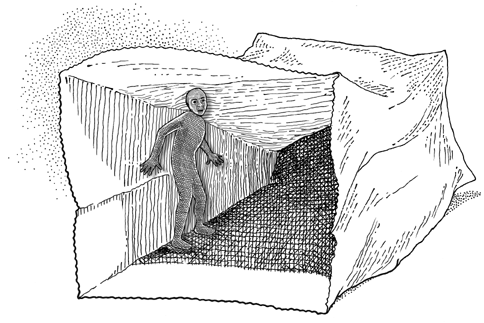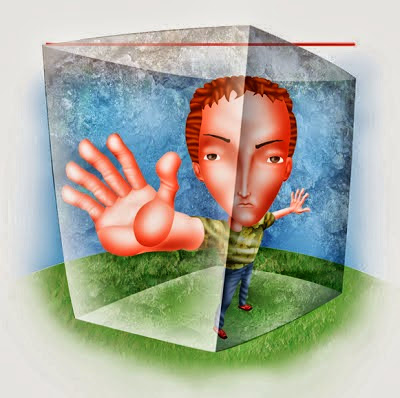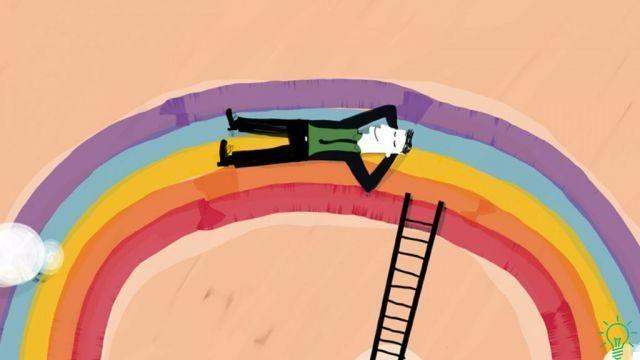 There are many people who often suffer from panic attacks. Panic attacks are in fact one of the most common disorders related to anxiety and tend to generate a lot of stress and strong tension in those who suffer from them, contributing to worsening the quality of their life. Today I suggest 5 methods that can help you learn how to control panic attacks.
There are many people who often suffer from panic attacks. Panic attacks are in fact one of the most common disorders related to anxiety and tend to generate a lot of stress and strong tension in those who suffer from them, contributing to worsening the quality of their life. Today I suggest 5 methods that can help you learn how to control panic attacks.1. Isolate basic concernsAnxiety and panic attacks are usually triggered by a slight worry that turns into a massive web of worry, which affects our emotional stability. For example, a panic attack can start with a simple negative idea like this: "The report I delivered yesterday was not very good, it will surely disappoint them", but other equally negative thoughts follow this thought: "My boss hates me. . He won't give me another chance. ”“ They're going to fire me. ”So, little by little ideas are intertwined that begin to increase our anxiety to end with a full blown panic attack. Obviously, if instead of letting ourselves be overwhelmed by this web of negative ideas, we stop at the first idea and neutralize it, we will feel calmer and the panic attack will not come.
2. Don't get involved in the situationWhen children have a tantrum, what they are actually looking for is adult attention. Therefore, the worst strategy is to scold or comfort them, because in this way we are giving them what they wanted: attention. It is therefore very likely that next time they will return to using this technique. However, if instead of paying attention to them we ignore their behavior, it will fade away on its own. Well, when we are on the verge of a panic attack the brain acts like a small child about to have a tantrum. If we start thinking about the situation that caused these feelings, we risk worsening the situation. Conversely, if we choose to ignore what has bothered us, anxiety is likely to begin to subside.In fact, several studies have observed that in people suffering from panic attacks there is an abnormality in the normal patterns of emotion processing. , and this prevents them from easily suppressing negative emotions. Therefore, the more you search, the more the amygdala (the center of fear) is activated, enhancing the increasingly negative thoughts and the consequent physiological reaction to them.3. Don't overestimate the threat either underestimate their abilitiesPanic attacks always appear in the presence of a potential threat, but not a really important threat but, rather, in the face of an exaggeration of the danger. Add to this that we often underestimate our ability to cope with this threat, and this results in a panic attack; however, if we were able to perceive the threats with their actual degree of danger and felt capable of facing them, surely our anxiety levels would be much lower. So, whenever you perceive a threat, you should ask yourself if it is really as dangerous as you think. Also, one must always think that many people have faced situations similar to this one so that we too can do it.
4. Let your mind restHave you tried to avoid all situations that cause anxiety? Have you practiced all the exercises you know to avoid panic attacks? Have you tried to consider threats as something natural? Despite all these efforts, do you still have frequent panic attacks? If the answer is yes, then it is time to rest your mind and give it a break to resume treatment in the next few days.One of the most famous psychological studies was done in the 80s and involved asking people to stop. think of "a white bear". If this condition had not been placed on them, perhaps no one would have thought of the bear, but set the study on this basis, the thought of the bear was recurring. Sometimes, when we try to avoid an idea, it ends up strengthening, so it is better to take a break to relax.
5. Learn to live with anxietyWe usually feel anxious in the face of different situations of daily life. We generally try to avoid these situations because even just imagining them makes us feel uncomfortable, as if threatened. However, have you ever wondered what would happen if we got used to these situations, if we turned them into something common? We would most likely adapt and the fear would vanish, because we would stop considering these situations as threatening. This may sound crazy, but it's just the beginning of one of the most effective cognitive-behavioral therapy techniques to eliminate phobias: systematic desensitization. Essentially, it's about getting used to situations that cause anxiety until you realize they aren't dangerous.


























